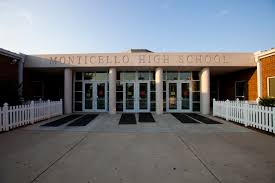
Breaking News
 Trump, Treason, and the New York Times
Trump, Treason, and the New York Times
 Democrat idiocy at work in San Francisco
Democrat idiocy at work in San Francisco
 BREAKING THROUGH Tesla AI in 2026
BREAKING THROUGH Tesla AI in 2026
Who Was The Biggest Antisemite In 2025?
Top Tech News
 Laser weapons go mobile on US Army small vehicles
Laser weapons go mobile on US Army small vehicles
 EngineAI T800: Born to Disrupt! #EngineAI #robotics #newtechnology #newproduct
EngineAI T800: Born to Disrupt! #EngineAI #robotics #newtechnology #newproduct
 This Silicon Anode Breakthrough Could Mark A Turning Point For EV Batteries [Update]
This Silicon Anode Breakthrough Could Mark A Turning Point For EV Batteries [Update]
 Travel gadget promises to dry and iron your clothes – totally hands-free
Travel gadget promises to dry and iron your clothes – totally hands-free
 Perfect Aircrete, Kitchen Ingredients.
Perfect Aircrete, Kitchen Ingredients.
 Futuristic pixel-raising display lets you feel what's onscreen
Futuristic pixel-raising display lets you feel what's onscreen
 Cutting-Edge Facility Generates Pure Water and Hydrogen Fuel from Seawater for Mere Pennies
Cutting-Edge Facility Generates Pure Water and Hydrogen Fuel from Seawater for Mere Pennies
 This tiny dev board is packed with features for ambitious makers
This tiny dev board is packed with features for ambitious makers
 Scientists Discover Gel to Regrow Tooth Enamel
Scientists Discover Gel to Regrow Tooth Enamel
 Vitamin C and Dandelion Root Killing Cancer Cells -- as Former CDC Director Calls for COVID-19...
Vitamin C and Dandelion Root Killing Cancer Cells -- as Former CDC Director Calls for COVID-19...
Schools Tap Secret Spectrum to Beam Free Internet to Students

The floor-to-ceiling glass wall between the high-tech fabrication lab and the hallway at Monticello High School in Albemarle County, Virginia, is meant to showcase the hands-on, self-directed learning done there.
"I give the kids access to all the tools pretty much right off the bat," said Eric Bredder, with a sweeping gesture taking in the computer workstations, 3-D printers, laser cutters and milling machines, plus a bevy of wood and metalworking tools that he uses while teaching computer science, engineering and design classes. But Bredder can't give students the tool he considers most indispensable to 21st-century learning—broadband internet beyond school walls.
"This is an equity issue," said Bredder. "If some kids can go home and learn, discover and backfill information, while other kids' learning stops at school, that's a huge problem."
Whether it's used for homework-assignment web searches, streamed video tutorials, educational apps or collaborative multimedia projects, fast internet at home is rapidly turning into a necessity for America's students. Yet, according to a 2015 report by the Pew Research Center, about five million households with school-aged children are mired in the so-called homework gap, because they can't afford broadband or they live in underserved rural areas, such as the expanse of farms and hillside vineyards of this Virginia district spreading south from Charlottesville to the small town of Scottsville along a bend in the James River.



